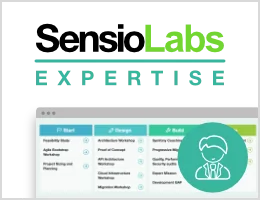Locale
Validates that a value is a valid locale.
The "value" for each locale is any of the ICU format locale IDs. For example,
the two letter ISO 639-1 language code (e.g. fr), or the language code
followed by an underscore (_) and the ISO 3166-1 alpha-2 country code
(e.g. fr_FR for French/France).
The given locale values are canonicalized before validating them to avoid
issues with wrong uppercase/lowercase values and to remove unneeded elements
(e.g. FR-fr.utf8 will be validated as fr_FR).
| Applies to | property or method |
| Class | Locale |
| Validator | LocaleValidator |
Basic Usage
1 2 3 4 5 6 7 8 9 10 11 12
// src/Entity/User.php
namespace App\Entity;
use Symfony\Component\Validator\Constraints as Assert;
class User
{
#[Assert\Locale(
canonicalize: true,
)]
protected string $locale;
}1 2 3 4 5 6
# config/validator/validation.yaml
App\Entity\User:
properties:
locale:
- Locale:
canonicalize: true1 2 3 4 5 6 7 8 9 10 11 12 13 14
<!-- config/validator/validation.xml -->
<?xml version="1.0" encoding="UTF-8" ?>
<constraint-mapping xmlns="http://symfony.com/schema/dic/constraint-mapping"
xmlns:xsi="http://www.w3.org/2001/XMLSchema-instance"
xsi:schemaLocation="http://symfony.com/schema/dic/constraint-mapping https://symfony.com/schema/dic/constraint-mapping/constraint-mapping-1.0.xsd">
<class name="App\Entity\User">
<property name="locale">
<constraint name="Locale">
<option name="canonicalize">true</option>
</constraint>
</property>
</class>
</constraint-mapping>1 2 3 4 5 6 7 8 9 10 11 12 13 14 15 16 17
// src/Entity/User.php
namespace App\Entity;
use Symfony\Component\Validator\Constraints as Assert;
use Symfony\Component\Validator\Mapping\ClassMetadata;
class User
{
// ...
public static function loadValidatorMetadata(ClassMetadata $metadata): void
{
$metadata->addPropertyConstraint('locale', new Assert\Locale([
'canonicalize' => true,
]));
}
}Note
As with most of the other constraints, null and empty strings are
considered valid values. This is to allow them to be optional values.
If the value is mandatory, a common solution is to combine this constraint
with NotBlank.
Options
groups
type: array | string default: null
It defines the validation group or groups of this constraint. Read more about validation groups.
message
type: string default: This value is not a valid locale.
This message is shown if the string is not a valid locale.
You can use the following parameters in this message:
| Parameter | Description |
|---|---|
{{ value }} |
The current (invalid) value |
{{ label }} |
Corresponding form field label |
payload
type: mixed default: null
This option can be used to attach arbitrary domain-specific data to a constraint. The configured payload is not used by the Validator component, but its processing is completely up to you.
For example, you may want to use several error levels to present failed constraints differently in the front-end depending on the severity of the error.

